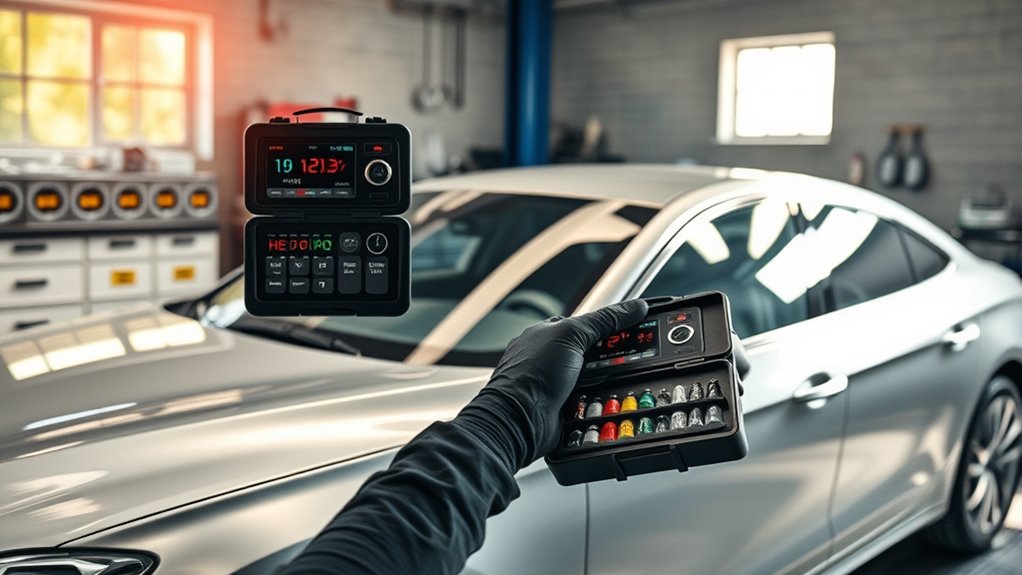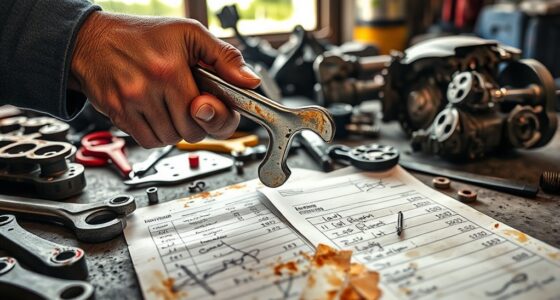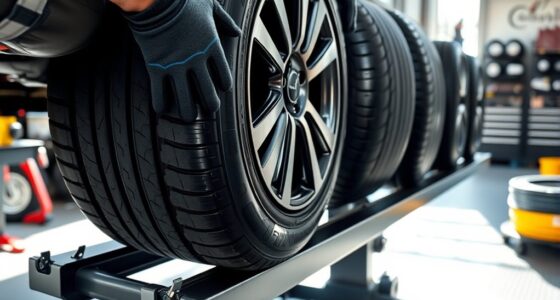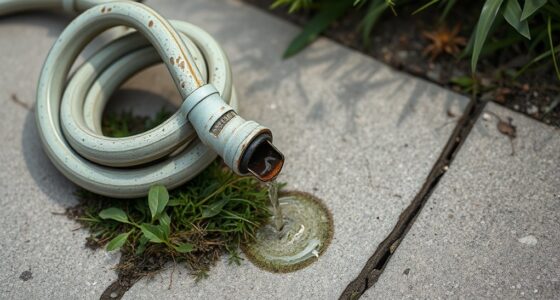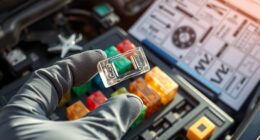To save money on car maintenance, prioritize DIY repairs like changing oil or replacing filters with guidance from online tutorials. Perform regular inspections to catch issues early, such as checking tire pressure and fluid levels. Follow your vehicle’s maintenance schedule and keep a log for reminders. Shop around for quality parts and avoid unnecessary professional fees. Staying proactive and informed helps you keep your car in top shape without overspending—keep going to discover more cost-effective tips.
Key Takeaways
- Perform regular DIY inspections and simple repairs to catch issues early and avoid costly professional service.
- Follow your vehicle’s maintenance schedule and keep a detailed log to prevent neglect and expensive breakdowns.
- Use online tutorials and videos for guidance on maintenance tasks like oil changes and air filter replacements.
- Shop around for quality parts online and consider installing them yourself to save on labor costs.
- Stay proactive by monitoring fluid levels, tire pressure, and wear to maintain vehicle health and reduce future repair expenses.
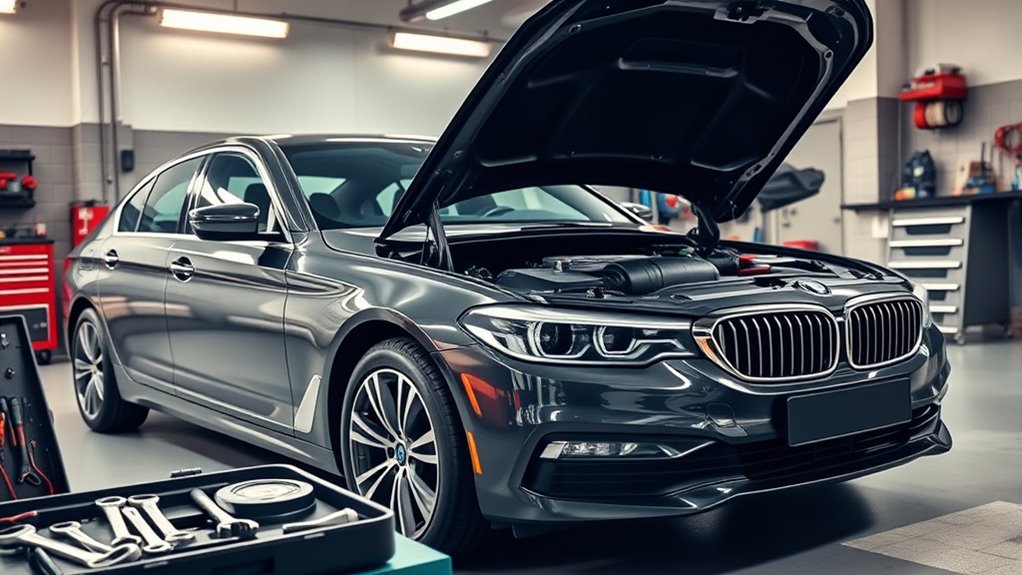
Regular car maintenance might seem costly upfront, but it can save you a lot of money in the long run. One of the best ways to keep expenses down is by learning DIY repairs for simple issues. When you take matters into your own hands, you avoid costly labor fees and can address small problems before they escalate. Basic repairs like changing your oil, replacing air filters, or swapping out worn windshield wipers are straightforward and often require only a few tools and some guidance. Plenty of online tutorials and step-by-step videos make these tasks manageable, even if you’re new to car maintenance. Tackling these repairs yourself not only saves money but also gives you a better understanding of your vehicle’s needs, allowing you to spot potential issues early. Additionally, understanding vehicle maintenance insights can help you make informed decisions about repairs and upkeep. Preventive checks are another essential element in saving money on car maintenance. Regularly inspecting your vehicle for signs of trouble helps you identify issues before they turn into expensive repairs. For example, routinely checking tire pressure and tread depth can extend tire life and improve fuel efficiency. Inspecting fluid levels such as coolant, brake fluid, and transmission fluid ensures your car runs smoothly and prevents overheating or component failure. During preventive checks, look for obvious leaks, worn belts, or damaged hoses. Catching these problems early means you can address them quickly and often at a lower cost. Staying proactive with these checks keeps your car running reliably and prevents unexpected breakdowns that can drain your wallet.
DIY car repairs save money and boost your understanding of vehicle needs.
In addition to DIY repairs and preventive checks, maintaining a maintenance schedule is key. Refer to your vehicle’s manual to know when to replace filters, fluids, or parts. Following this schedule guarantees you’re not missing critical upkeep that could lead to bigger issues later. Keeping a maintenance log can help you stay organized and remind you of upcoming tasks. Also, shop around for quality parts and services. Sometimes, buying parts online and installing them yourself can save money compared to dealership prices. However, know your limits—if a repair feels beyond your skill level, it’s smarter to consult a professional early on rather than risking further damage.
Ultimately, being proactive and informed empowers you to cut costs without sacrificing safety or vehicle performance. Regularly performing DIY repairs and preventive checks keeps your car in top shape, reducing the likelihood of expensive repairs down the line. With a little effort and knowledge, you can keep your vehicle running efficiently while keeping more money in your pocket.
Frequently Asked Questions
How Often Should I Change My Car’S Oil for Cost Savings?
You should check your car’s owner’s manual for recommended oil change intervals, typically every 5,000 to 7,500 miles. Sticking to these intervals guarantees cost-effective maintenance, preventing engine wear and costly repairs later. Regular oil changes keep your engine running smoothly, saving you money in the long run. Don’t neglect this simple step; it’s key to maintaining your vehicle’s performance and keeping maintenance costs manageable.
Are DIY Repairs Cheaper Than Professional Services?
Thinking DIY repairs are always cheaper? Think again. The cost comparison heavily depends on your skill level; a small fix might save money, but a complex repair could end up costing more if you mess up. While you might avoid labor costs, you risk costly mistakes without proper expertise. Be honest about your skills before diving into DIY projects—sometimes, paying a pro saves you more in the long run.
What Are the Signs of a Failing Brake System?
You should watch for signs of a failing brake system, like squealing brake noise or a spongy brake pedal. If your brake fluid level drops or you notice a burning smell, it indicates issues inside the system. Pay attention to any vibrations or longer stopping distances. These signs mean your brakes need urgent attention to prevent accidents and costly repairs, so don’t delay getting professional help.
When Is It Best to Replace Tires for Longevity?
You should replace your tires when the tread depth reaches 2/32 inch, or sooner if you notice uneven wear. Regular tire rotation helps distribute wear evenly, extending tire life, so make it a habit every 5,000 to 8,000 miles. Check your tread depth regularly with a gauge or the penny test, and substitute tires promptly to guarantee safety and maximize their longevity.
How Can I Improve Fuel Efficiency to Save Money?
Imagine your fuel efficiency skyrocketing like a rocket—it’s possible! You can achieve this by practicing eco-friendly driving, which reduces unnecessary acceleration and braking. Keep your tire pressure optimized, as underinflated tires can waste fuel like pouring money out the window. Regularly maintaining your engine and reducing extra weight also help. These small adjustments make a huge difference, saving you money while keeping your car environmentally friendly.
Conclusion
By following these tips, you’ll keep your car running smoothly and save a fortune—seriously, your wallet will thank you! Regular maintenance isn’t just about avoiding costly repairs; it’s about taking control and making smart choices that last a lifetime. Imagine never being stranded or overspending on fixes again—that’s the power of being a savvy car owner. So, stay proactive, stay bold, and watch your savings grow faster than you ever thought possible!
